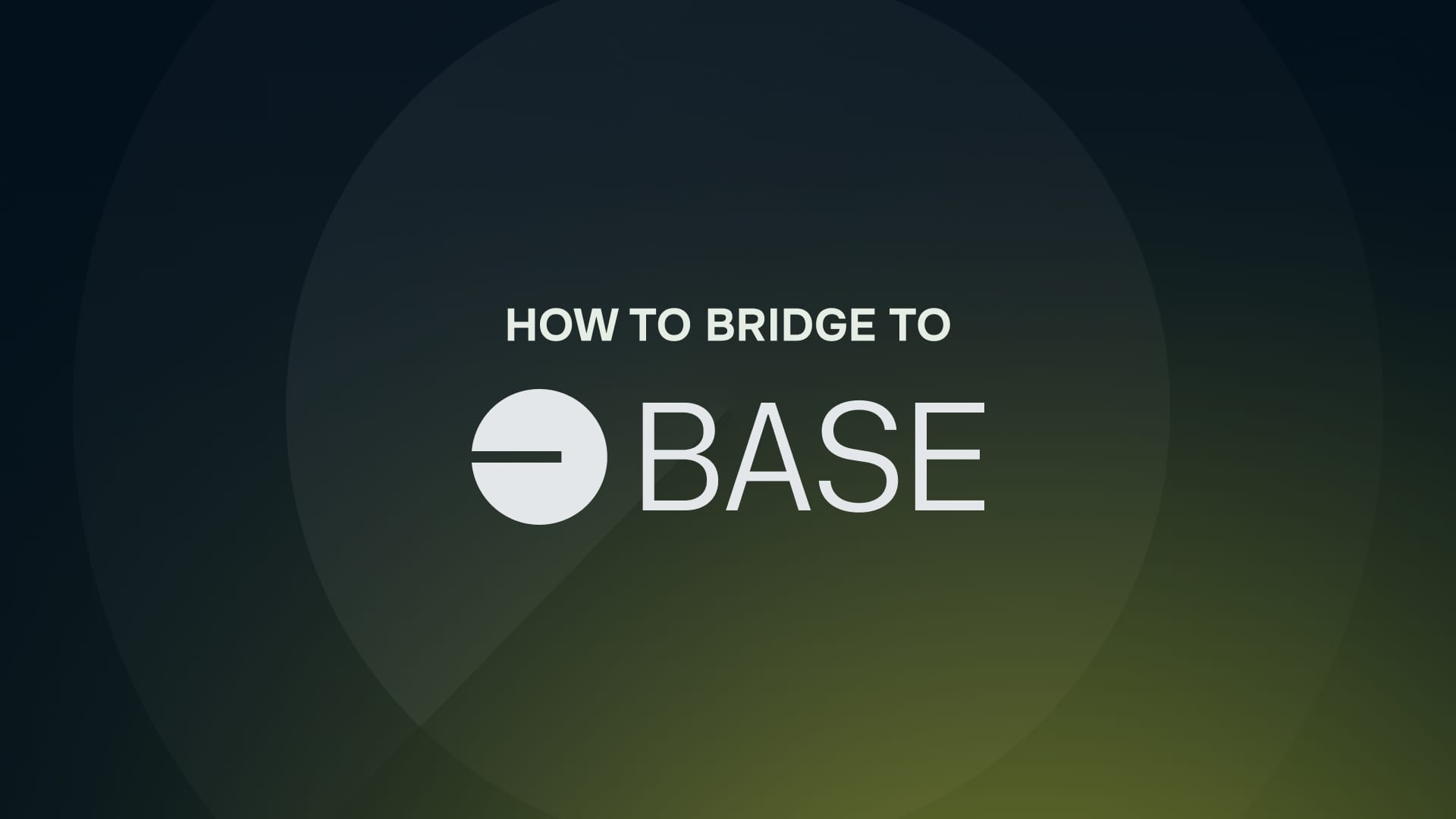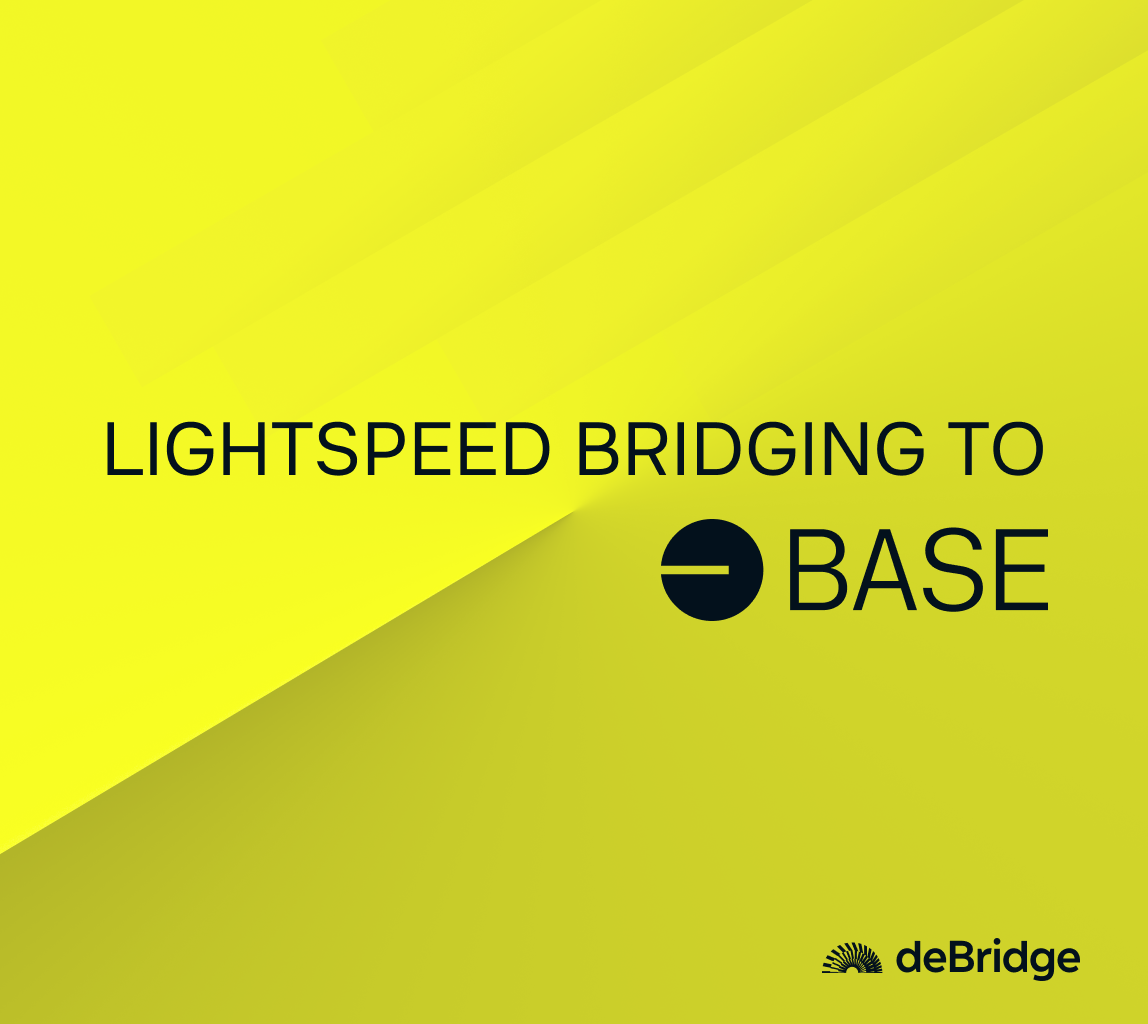A Guide on How to Bridge to Base

Unlike Ethereum, which launched in 2015, Base is a relatively newer blockchain (developed by Coinbase), with the mainnet opened in mid-2023 to the general public. The base ecosystem is designed keeping in mind the intricacies of the Ethereum blockchain network to give everyone a way to access the Layer-2 blockchain at a fraction of the cost.
Base blockchain is known for its high transaction speed and can process thousands of transactions per second, significantly improving Ethereum's native throughput. It also has significantly lower transaction fees and leverages Ethereum's robust security while reducing congestion and costs. These elements have contributed to Base experiencing substantial growth within its ecosystem since its launch, driven by the direct access Base provides to Coinbase's on chain products.
To begin your journey on the Base chain, you'll need to bridge ETH to the base mainnet or make a cross-chain transaction for all your transactions on the base network. Please note that the Base network doesn't have its own token and requires ETH as a gas fee to interact with protocols and dApps within the Base ecosystem.
This is a comprehensive guide with all the most popular methods to bridge from different blockchains to Base.
How to Bridge to Base
Before bridging to Base, it's essential to configure your wallet client with the Base Mainnet RPC details. This can be done by visiting Chainlist, connecting your wallet, and allowing it to add the Base RPC details to your client automatically.
Now that your connected wallet is configured to support the Base network, you're ready to bridge to the base chain. Let's explore how you can easily bridge assets to the Base chain.
Official Base Bridge
The official Base Bridge allows you to transfer funds between the Ethereum mainnet and the Base network. You can bridge assets by connecting your EVM wallet, selecting the desired asset, and initiating the transfer, which takes advantage of the security and scalability of the Ethereum blockchain network.
What are the limitations of Base Bridge?
Base bridge supports only a limited range of assets, restricting its usability for those holding tokens outside its supported list. Moreover, the Base Bridge processes transactions at a slower pace, which can be inconvenient for users who need to bridge to the base quickly.
The official Base Bridge also does not support advanced functionalities such as native token swaps or cross-chain dApp integrations, making it less appealing for the DeFi native audience. Additionally, users must pay fees for both Layer 1 and Layer 2 transactions, which can accumulate based on the transaction volume and current network conditions.
deBridge: Lightspeed bridging to Base

deBridge is the bridge that moves at lightspeed. By removing the bottlenecks and risks of liquidity pools, deBridge enables value and information to flow instantly across the DeFiverse with deep liquidity and guaranteed rates. It's built for everyone in DeFi including non-technical users, so you can bridge easily in a couple of steps.
Bridges brings all the blockchain ecosystems under one roof, allowing you access to a broader range of services and unlocking opportunities in the chainscape.
How to bridge to Base?
deBridge provides an instant, low-cost bridging solution to help you bridge any asset on any chain to any asset on the Base network. Let’s see how you can bridge your assets to Base using an example to transfer native ETH from ETH mainnet:
- Visit https://app.debridge.finance
- Select the origin chain and asset you’d like to bridge. Here, we will select Ethereum as the source chain and ETH as the asset.
- Next, select the destination chain and asset you’d like to receive. Here, we will select the Base mainnet and USDC as the destination asset on the target chain.
- Connect your EVM wallet and select Base as the destination.
- Enter the quantity and review the transaction details.
- As the final step, confirm the trade, pay gas fees, and sign the ensuing transactions to receive crypto in your Base wallet.
You'll know you've successfully bridged when you see the "Order Fulfilled" pop-up, and the bridged tokens will appear in your wallet balance directly on Base. Technical users can inspect the transaction on the Base mainnet explorer.
